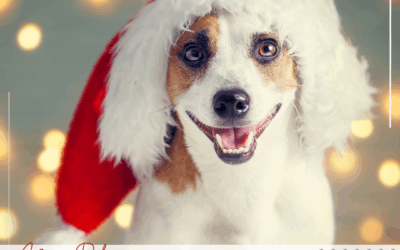Confession time: I cringe when I see most videos online of dogs and kids. There, I said it. Why? Mostly because what people think is “cute” is really an uncomfortable dog asking for space. And that’s what I see but people aren’t aware of dog body language enough to know the dog is uncomfortable. It’s pretty obvious to people if a dog is growling or snapping but people often overlook earlier warning signs, those that precede the snap or growl, where we could have intervened. Why? Well, lack of education about body language certainly plays a part but also, parents, especially new parents are overwhelmingly hopeful and optimistic that their dog and child will get along. And I think this optimism clouds the reality in many cases.
We’ve been taught for ages that a dog licking us is a dog “kissing” and that a dog wagging its tail is happy. When really, both of these can be wrong and are often misinterpreted. I’ve had dozens and dozens of clients come to me saying “my dog bit someone but they were wagging their tail so I thought they were happy!”
Tail wags and dogs licking are not always the dog is happy. More often than not, lip licking and kissing are distress signs from the dog.
We know that licking faces in wild canids like wolves is a way to get adults to regurgitate food for younger dogs. We also see some pet dogs lick the faces of other dogs and is thought to be an appeasement behavior, the licker communicating, “I’m not a threat, please don’t hurt me” or as a general sign of friendliness.
In dog/child interactions a dog “kissing” is very likely a appeasement behavior or the dog is conflicted and is lip licking or kissing as a result of conflict. Commonly I see mom or dad holding the baby, dog approaches, either because they’re curious or just want to be near mom/dad but then the baby is there, and that makes the dog uncomfortable. The dog still wants to be near mom/dad but not necessarily the baby. Or the dog was curious, approached but then the baby made a sound and that was scary, so the dog licks/kisses, maybe in an attempt to make the baby go away.
Family Paws founder, Jen Shryock, calls dogs kissing babies or kids a “Kiss To Dismiss” and you can read her post about it here, with some video. She notes these kisses are usually more pushy or forceful than a soft, gentle lick we might see in other contexts, and I’ve seen this.
I know parents want their dog and child to have that fairytale, Instagram-worthy life together, but the reality is, many, if not most dog-kid relationships evolve over time and aren’t always Instagram-worthy. There is often conflict, anxiety and yes, sometimes aggression.
As a licensed Family Paws Parent Educator and a certified behavior consultant and trainer whose speciality is fear and aggression, I work with a lot of families with dogs and kids. If you’re expecting, now is the time to schedule a one on one pre-baby prep session to help prepare your dog (and you!) for the big changes ahead once the baby arrives and make your dog safer to be around. And experience tells me, it’s always better to be proactive than reactive.
To safely have dogs and kids living together requires an understanding of your dog’s body language, supervision, management, planning and training. There’s a lot of well-meaning, but misguided information out there on best practices for introducing dogs and babies. My free guide, 10 Dos and Don’ts When Introducing Your Dog to Your New Baby is a great start to give you some guidance.
And I really encourage you to learn your dog’s body language, including subtle signals when they’re stressed, anxious or fearful. This is the most important thing you can do. If you don’t know when your dog is uncomfortable, you won’t know how or when to help them. Don’t wait for your dog to be growling, biting or lunging to know he’s upset. Download my free Dog Communication handout here.
And as a reminder, Never punish the dog for growling or communicating. I get it. Growling can be very upsetting and scary, especially if our beloved dog is growling at our child and often our knee-jerk reaction is to yell “no” to the dog, in an attempt to stop this “undesirable” behavior. But, this will just make things worse.
As your child gets older, then you can work on training your child and teaching them how to safely interact with dogs, not just your dog, but dogs in general. Dog-child safety isn’t 100% on the dog. We cannot expect dogs to just tolerate what we throw at them. This means teaching your child age appropriate interactions and basic rules like when Fluffy has something or is resting to not approach.
If your dog is already afraid of kids or strangers, you can set up a one on one fear and aggression consult to learn how to help them.
If you’re expecting, grab my self-paced course for pre-baby prep, Bringing Home Baby.
Happy training!
![]()




